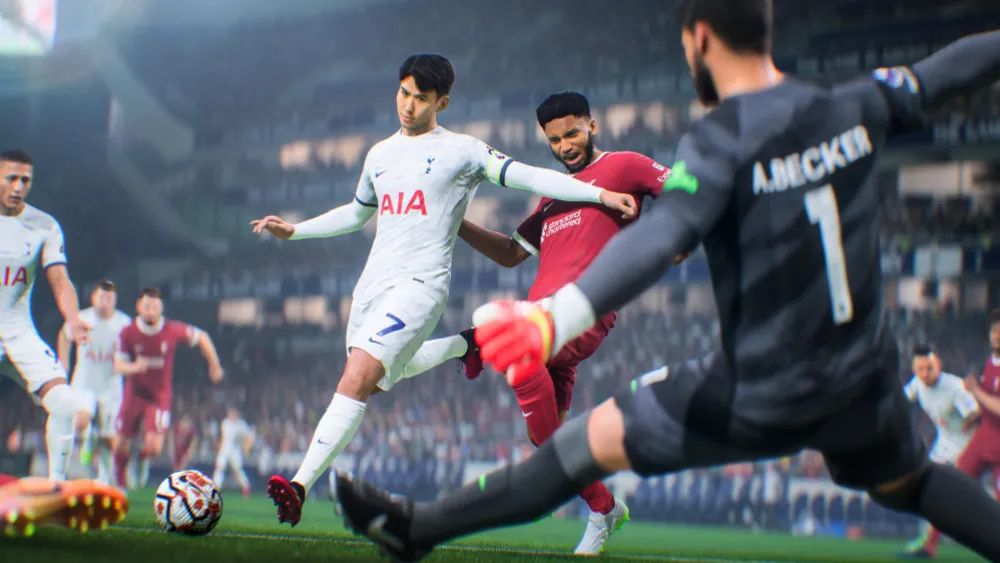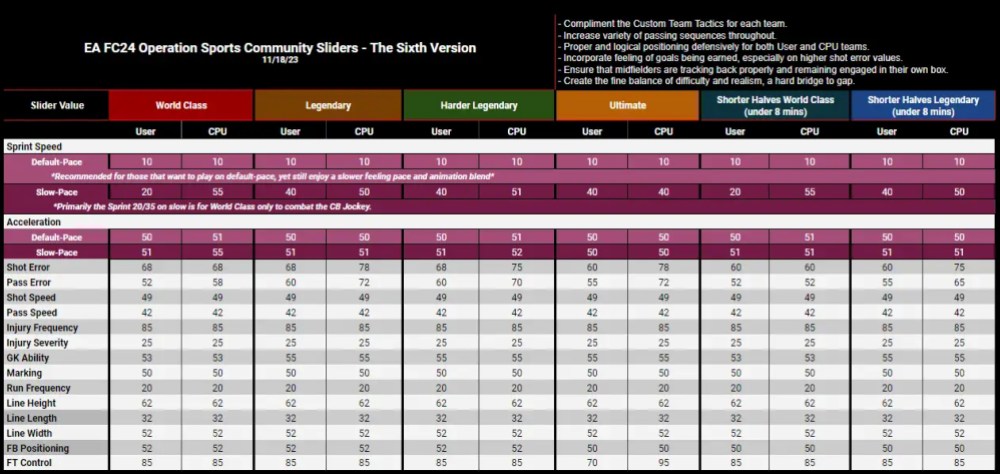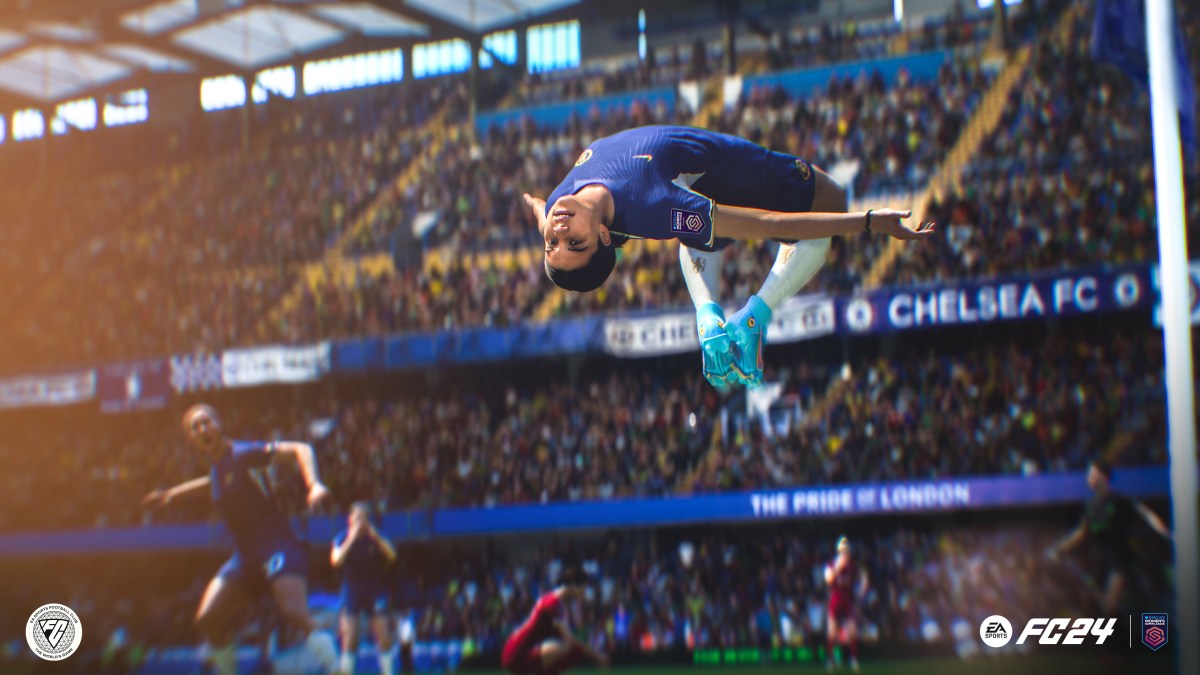Matt10 and company have continued to tweak their EA Sports FC 24 OS Community Sliders since launch, and last week they hit on Version 6. Here is Matt10 with the new breakdown (and then the sliders).
Shortly after releasing Version 5, we found ourselves really enjoying the game and the resistance throughout the pitch was felt. Something was missing though, and that was the ball physics and the ball being alive. Meaning, it just didn’t feel like the ball was to be controlled, it was more so being absorbed — a term I’ve used in the past. Balla (goblue) mentioned that he was loving the set, but had pass speed at 42, and we became intrigued as there is always a want to have better ball physics without experiencing the FIFA like speed. Once we used the pass speed, it felt great, it provided animations we hadn’t seen before and from there, Version 6 started to take shape.

The main focus was to get pass speed at 42 to work within the set and look good on the eyes. As lower pass errors were used in Version 5, we had to balance the increased pass speed with a higher pass error value. This way, we reintroduce what we saw in FIFA 23, a more calm CPU attack and a more realistic weight to the ball. While physics and FIFA are usually defied rather than honored, the ball was alive at least enough that it didn’t feel like a flat volleyball every time it made contact with the players’ feet.
Once pass speed was sorted, it was onto the next issue. This one was pretty significant for the slow-speed users. I have to thank Ukraun for his continued observation on the Sprint Speed and how it was important to pretty much accept that following concept:
The dribbler is always at 50 speed. So the defending player will be at the Sprint Speed value, meaning if we have the CPU at a 35 Sprint, and the user is dribbling the ball, the user will always have the advantage as we are actually at 50 Sprint. This is why it can be easy to use R1 dribble past the CPU, or cut across the field to beat multiple players. So raising their Sprint Speed value to 50+ ensures these game breaking events happen less.
I’ve kept that concept somewhat out of the limelight because I didn’t want to cloud the thread with these arbitrary “labbing” experiments that end up making things more chaotic to getting a set done. However, the truth is this concept is one that has to be respected and in a way the slow-speed users have to accept that in order to get an actual challenge, the CPU has to have the advantage in Sprint. So, that is why there are values on the slow-pace section of Sprint 20/55 (World Class), 40/50 (Legendary) and we evened it up for Ultimate at 40/40.
The higher Sprint will do what it is supposed to do. It helps with the CPU’s defensive reaction, their interest in 50/50 balls, their recovery when they get caught out of position. They are a real challenge overall, and it is not in a bad way. You can still out-sprint the CPU, you can still take advantage of their poor defensive angles (DAA) and you can still absorb some pretty vicious challenges depending on the player.
Moving on, the next value was to further confirm the Height, Length and Width values were on point. To be honest, the testers told me to stop, and I didn’t stop. I work as a quality engineer in my day job, so not reviewing something final without doing some form of regression testing (making sure everything still works after new values are inputted) is just not in my DNA. However, I can go a bit overboard because I want to see something immediately, so I use a significant value from the “original” to see that change. The original that I always come back to his the HLW of Version 4 (50/35/49), but the more we played with something near it, the more it was clear that the Version 5 values resulted in much more fun and appreciate for the little things throughout the pitch. It was so clear how much more resistance was felt, especially on the wings, compared to using a lower height and increased length, so there was no turning back.
Once that was sorted, we wanted to reintroduce the fullbacks so they aren’t instantly retreating all the way back to a preset shape, or they don’t overlap in full, etc. Basically we bumped FB positioning to get more variety in the attack, but also in the counter – such as from a center back trying to clear the ball opts to send a ball long towards the wings because the fullback is recovering from his advanced position.
After we felt pretty good there, the next was just to make sure the shot speed looked realistic. For me, it was to the point I couldn’t keep up with the ball on 50 shot speed. Several times the camera could not even keep up with the shot’s velocity. So, dropping this value to 49 shot speed has allowed us to see the velocity in shots a tad bit more, and that makes a difference because when you score screamers, you get to see it hit the back of the net rather than just have the camera quickly pan back.
With shot speed adjusted, it’s important to note that GK ability is going to be affected. We were seeing a lot of shots get pushed up into the air, and then recovered by the GK in the same sequence. This is just highly unrealistic, and became a real eye sore. Other issues with the keeper have been the keeper saving “behind” their dive, which may have further confirmed shot speed is too high at 50.
Regardless, a lower shot speed should help animations. The worry is understandable that it will not be as easy to score screamers against the GK, but this is not the case at all. Just earlier, Brad had a heck of a goal.
Overall, we are ecstatic with this set. The ball physics stand out, the resistance through the pitch is there. The variety that stems from that resistance is something that makes you just want to play another game after another game.
We hope you do just that – enjoy the Version 6 sliders!
EA Sports FC 24 OS Community Sliders Version 6

If you want to give feedback or give thanks, head to the thread on OS.








Published: Nov 27, 2023 04:29 pm